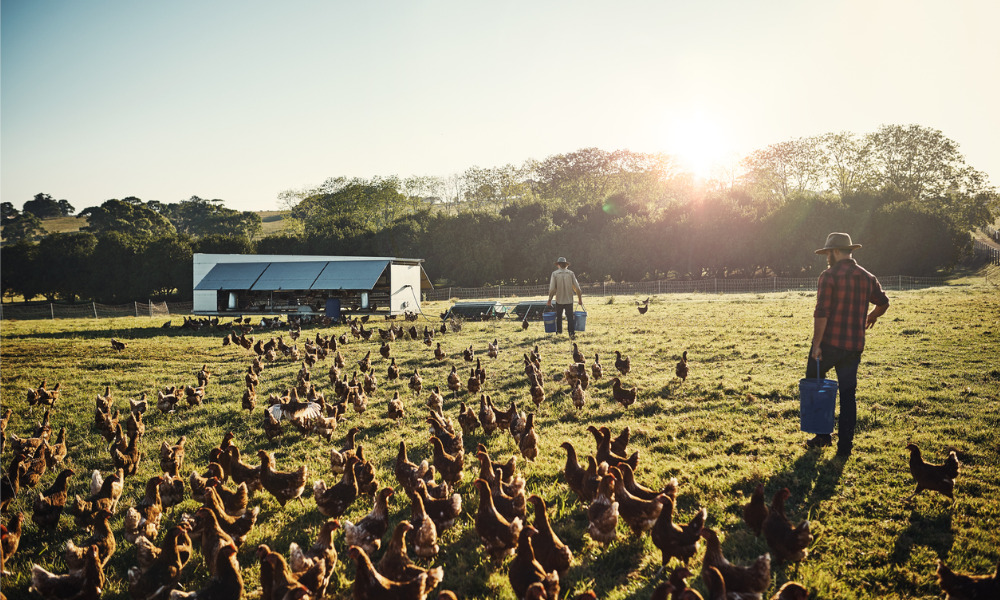Avian influenza spreading rapidly in North America and infecting mammals

The threat of avian influenza, specifically the highly pathogenic H5N1 strain, is increasingly posing a greater risk to Canadian bird farms, and the people who work at them. “They are always on the front lines of the next pandemic,” says Alyson Kelvin, referring to anyone who works directly with animals, and in this case, birds.
Kelvin is virologist and researcher at the Vaccine and Infectious Disease Organization (VIDO), which is part of the University of Saskatchewan. “The people who are most likely to be infected first are those that have frequent contact with animals.”
About 300 premises (mostly farms) across Canada have been infected or are currently infected with highly pathogenic avian influenza, according to the Canadian Food Inspection Agency (CFIA). More than 7 million birds have been impacted.
The CFIA is so concerned about monitoring the bird flu situation that it updates the number of premises and birds impacted weekly.
When the virus is identified on a farm, the CFIA is called in to manage biosecurity and biocontainment. Steve Leech is the director of food safety and animal health with the Chicken Farmers of Canada. Here is how he describes the CFIA’s robust response to an infection.
“Any movement of personnel or equipment on or off that farm needs to go through a biocontainment team. That would include everything from donning and doffing of biosecurity gear, think full Tyvek suits and masks, the cleaning and disinfection of equipment, doing everything to ensure the virus that's on that farm stays on that farm and does not exit and spread further.”
The virus has spread from birds to at least 17 different mammals. It has killed minks and sealions, as well as more than 58 million poultry birds worldwide. We are witnessing the largest outbreak of H5N1 since the virus first surfaced as a concern in China in 1996.
“We've known the potential of avian influenza to cause massive destruction around the world since the influenza virus was identified,” says Kelvin.
Humans are mammals, and while Kelvin says there is some debate in the scientific community about the case fatality rate of H5N1 in humans, the World Health Organization currently has it listed at 56%. The COVID-19 case fatality rate is between one to two percent.
WHO director-general Tedros Adhanom Ghebreuesus recently said the risk to humans remains low, “but we cannot assume that will remain the case, and we must prepare for any change in the status quo.”
For farmers in Canada, or anyone working around birds, that means taking all necessary precautions to prevent infection, “because protecting your flock is protecting you,” says Kelvin.
There are many preventative steps to take according to Leech, including limiting visitors and equipment that need to enter the barn, changing footwear and clothing when going in and out, frequent handwashing, and evaluating every input into the farm. Leech also advises having a water treatment program.
“It really comes down to vigilance in those areas on a daily basis, to protect against personnel and equipment that might be entering into the barn,” says Leech, who adds the CFIA needs to be called immediately if there is even a slight suspicion the virus could be present on a farm.
Some farmers are concerned the spring could see the virus spread more rapidly in Canada. The National Poultry Show recently took place in London, Ontario. It’s normally held in April, but was moved to February this year, because it wanted to get a biosecurity message out before the wild birds begin migrating.
Mark Bevan is the president of EthoGuard, and he was at the event, promoting his company’s Prevail disinfectant as well as biosecurity training and prevention services.
Bevan describes “a feeling of jubilation” among attendees, who were happy to be together again following years of pandemic lockdowns. But he says that doesn’t mean they aren’t concerned, “nobody wants to be the next mixing bowl for the next pandemic.”
He says many farmers didn’t take the threat of a global pandemic seriously in the past, because it had never happened in the modern era. Those feelings have changed, and the worry isn’t only focused on the health of the birds.
“In terms of the human health safety standpoint, I think that message is starting to get through now…we have to be careful about it,” says Bevan.
Kelvin makes the point farmers have always wanted to protect their flocks because “this is their life source.” Now the flock could threaten their lives.





